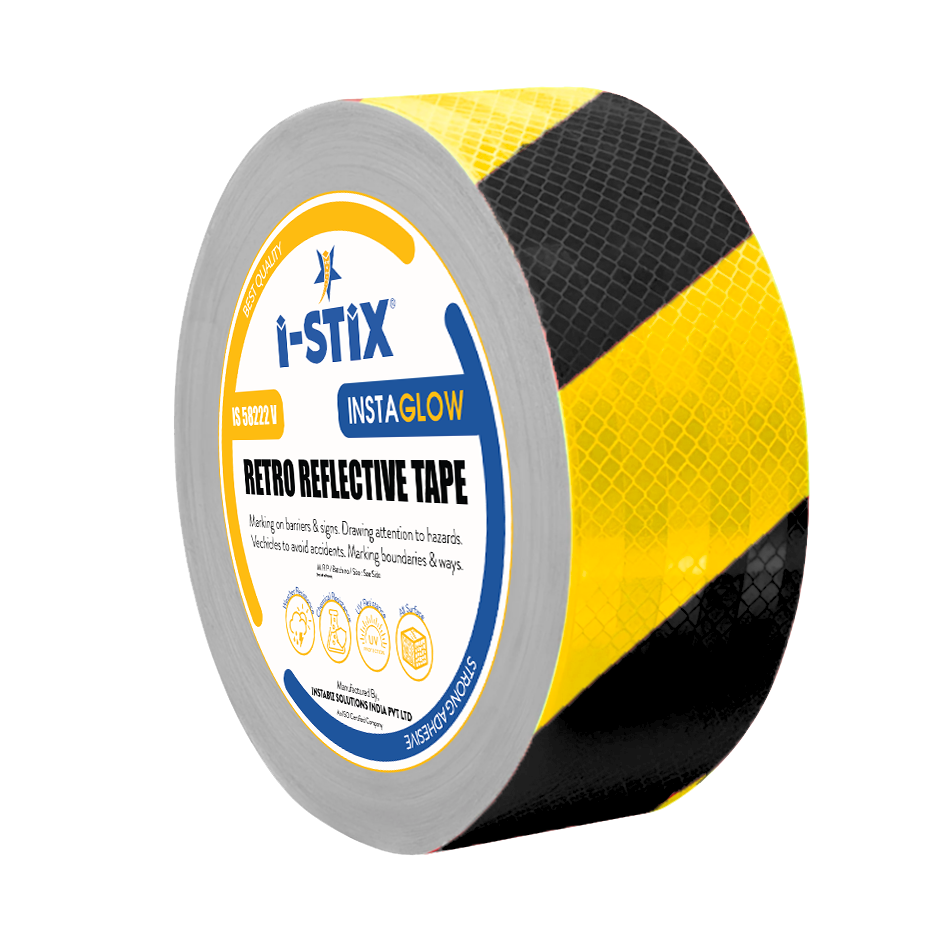INSTABIZ SOLUTIONS
IS 58222 V
Retro Reflective
Tape















Retro-Reflective Tape, also known as reflective tape or sheeting, is designed to collect and return light back to its source. Utilizing microscopic glass beads or man-made prisms, this tape effectively focuses and reflects light, making it highly visible from a distance. Whether used voluntarily or mandated by government regulations, Retro-Reflective Tape enhances safety by increasing visibility in low-light conditions. Ideal for maritime, offshore, vehicular, and general safety applications, this durable, high-strength adhesive tape withstands adverse weather conditions, including moisture and heat.
Features
-
Pressure-Sensitive: Easy to apply and ensures a strong bond.
-
High Visibility: Reflects light back to its source, enhancing visibility.
-
Durable and High-Strength: Withstands adverse weather conditions.
-
Versatile Reflective Properties: Available in glass bead and prismatic varieties.
-
Color Reflectivity: Transparent colors applied to the surface ensure the reflected light is colored.
Applications
-
Construction Sites: Identifies restricted areas and ensures safety for workers.
-
Sports & Gym Facilities: Used for court markings, boundary lines, and designated zones.
-
Emergency Exits & Pathways: Guides individuals during low-light conditions or power outages.
-
Safety & Hazard Marking: Highlights dangerous areas, steps, and obstacles to prevent accidents.
-
Warehouse & Industrial Use: Marks aisles, storage zones, and traffic lanes for efficient navigation.
-
Parking Lots & Driveways: Enhances lane markings and pedestrian walkways for better organization.
-
Workplace Safety: Increases visibility in dark environments, reducing the risk of workplace accidents.
-
Traffic & Safety Markings: Serves as a vital tool for traffic signs, road markings, and other safety applications
Sizes
Standard Cut Size
Colors
-
White
-
Yellow
-
Red
-
Green
-
Blue
Adhesive
Acrylic Solvent
Retro-Reflective Tape is an essential safety solution for various applications, from personal clothing to industrial machinery. Its ability to reflect light back to its source enhances visibility and reduces the risk of accidents in low-light conditions. Available in multiple colors and sizes, this durable and pressure-sensitive tape is suitable for a wide range of uses, ensuring safety and compliance with regulations worldwide.
Reflective
Reflective
There are several types of reflective sheeting. Engineer grade is the most common and is known as a type 1 film. Super engineer grade is a type 2. High intensity is the brightest glass bead film and is a type 3. The first prismatic film is a type 5. The brightest film is a type 8 and is often called crystal or diamond grade. We have charts on each of the films below. Exact intensities will vary by manufacturer but the charts below are a good guide. Also, please note that the Type 3 High Intensity chart also defines observation and entrance angles.
Reflectivity specifications on the different types of reflective sheeting
Type 1 Engineer Grade Reflectivity Chart

Type 2 Super Engineer Grade Reflectivity Chart

Type 3 High Intensity Reflectivity Chart

Type 4 High Intensity Prismatic (HIP)

Type 5 V82 Prismatic Tape (thin tape)

V98 Oralite Conformable Prismatic (slightly thicker than V92/V82)

Type 8 Crystal / Diamond Grade Reflectivity Chart (thick stiff tape)










